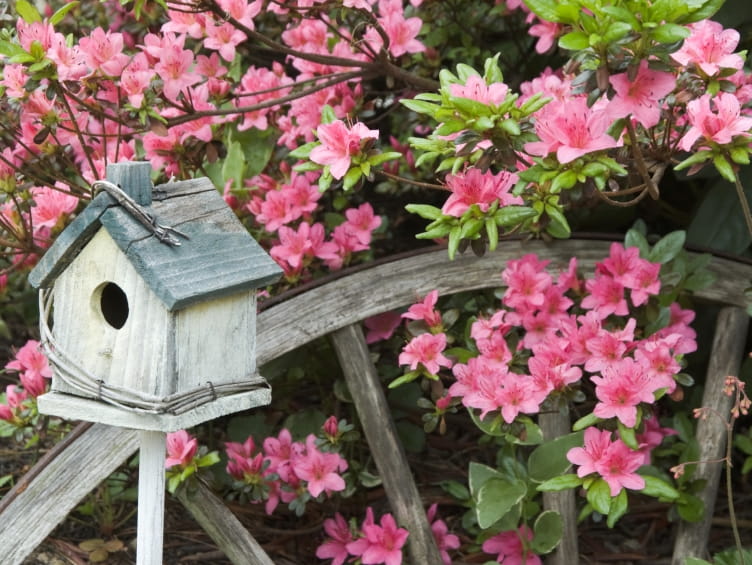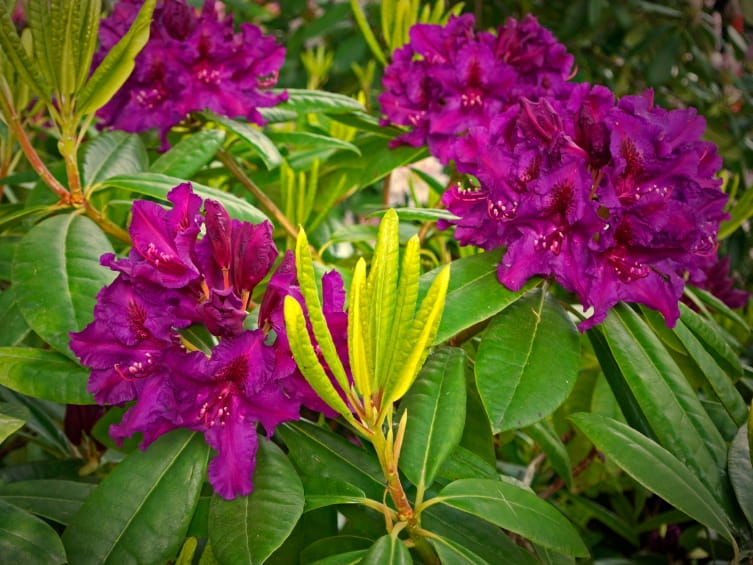Azaleas and Rhododendrons: "Mad Honey" and Other Surprising Dangers

The Bottom Line
Rhododendron is a genus of woody shrubs that includes over 1000 species. They usually have brightly colored flowers, making them popular residential landscaping plants. Azaleas are a subgenus of Rhododendron.

Are azaleas and rhododendrons poisonous?
Poison Control is often called in the spring and early summer about children who put the flowers or leaves in their mouths, or when children mistake the flowers for honeysuckle and suck on the nectar of the flowers. Generally, only mild symptoms such as mouth irritation, nausea, and vomiting are expected from such cases. Although rare, serious toxicity has occurred when people intentionally ate large amounts of these plants.What is “mad honey”?
In the first century BCE, Roman troops were allegedly poisoned with honey by the Heptakometes of Turkey. The Roman soldiers were reported to be confused and vomiting and were subsequently defeated in battle after eating the honey. We now believe that they were given honey made from the nectar of the flowering plant Rhododendron luteum. The poisonous honey is commonly referred to as "mad honey," a nickname earned because of the confusion it is known to cause. “Mad honey” can also cause very low blood pressure and heart rate, as well as irregular heart rhythm. These symptoms can be life-threatening.
The toxic components (grayanotoxins) can be found in very high concentrations in honey made by bees that gather nectar from rhododendrons and azaleas. This usually occurs where there are dense stands of these plants, particularly in the Mediterranean region. Most reported cases of poisoning from “mad honey” occurred in Turkey, where people ingested the honey produced by small-scale beekeepers. There are also a few reports of toxicity in people who intentionally ate the honey because of a false belief that it could help with some ailments.
When to call Poison Control
If you suspect someone has been exposed to a rhodendron or azalea and is having a problem, check the webPOISONCONTROL online tool for guidance or call Poison Control at 1-800-222-1222.Serkalem Mekonnen, RN, BSN, MPH
Certified Specialist in Poison Information
Revised William G. Troutman, PharmD
Professor of Pharmacy Emeritus
Poisoned?
Call 1-800-222-1222 or
Prevention Tips
- Identify all plants in your home and yard before an exposure happens.
- When outdoors, watch children and pets closely to be sure they do not eat unknown plants, seeds, or berries.
- Do not prepare your own herbal medicines.
- Do not prepare food or tea from plants growing in the wild or in your yard unless you are an expert and know how to do so safely.
This Really Happened
A 5-year-old girl sucked on 3 azalea flowers after mistaking them for honeysuckle. Her mother called Poison Control for advice when the girl complained of a stomachache. Poison Control told the mother that toxicity was not expected from such a small amount. The mother was advised to give the girl fluids to drink and to observe her. Poison Control called back the mother 3 hours later and learned that the girl had no symptoms.
For More Information
Guide to poisonous plants: rhododendron. Colorado State University. Accessed April 19, 2025.
References
Islam MN, Khalil MI, Islam MA, Gan SH. Toxic compounds in honey. J Appl Toxicol. 2014;34(7):733-742.
Nelson LS, Goldfrank LR. Plants. In: Nelson LS, Howland MA, Lewin NA, Smith SW, Goldfrank LR, Hoffman RS. Goldfrank’s Toxicologic Emergencies. 11th ed. McGraw Hill; 2019.
Poisoned?
Call 1-800-222-1222 or
Prevention Tips
- Identify all plants in your home and yard before an exposure happens.
- When outdoors, watch children and pets closely to be sure they do not eat unknown plants, seeds, or berries.
- Do not prepare your own herbal medicines.
- Do not prepare food or tea from plants growing in the wild or in your yard unless you are an expert and know how to do so safely.
This Really Happened
A 5-year-old girl sucked on 3 azalea flowers after mistaking them for honeysuckle. Her mother called Poison Control for advice when the girl complained of a stomachache. Poison Control told the mother that toxicity was not expected from such a small amount. The mother was advised to give the girl fluids to drink and to observe her. Poison Control called back the mother 3 hours later and learned that the girl had no symptoms.
